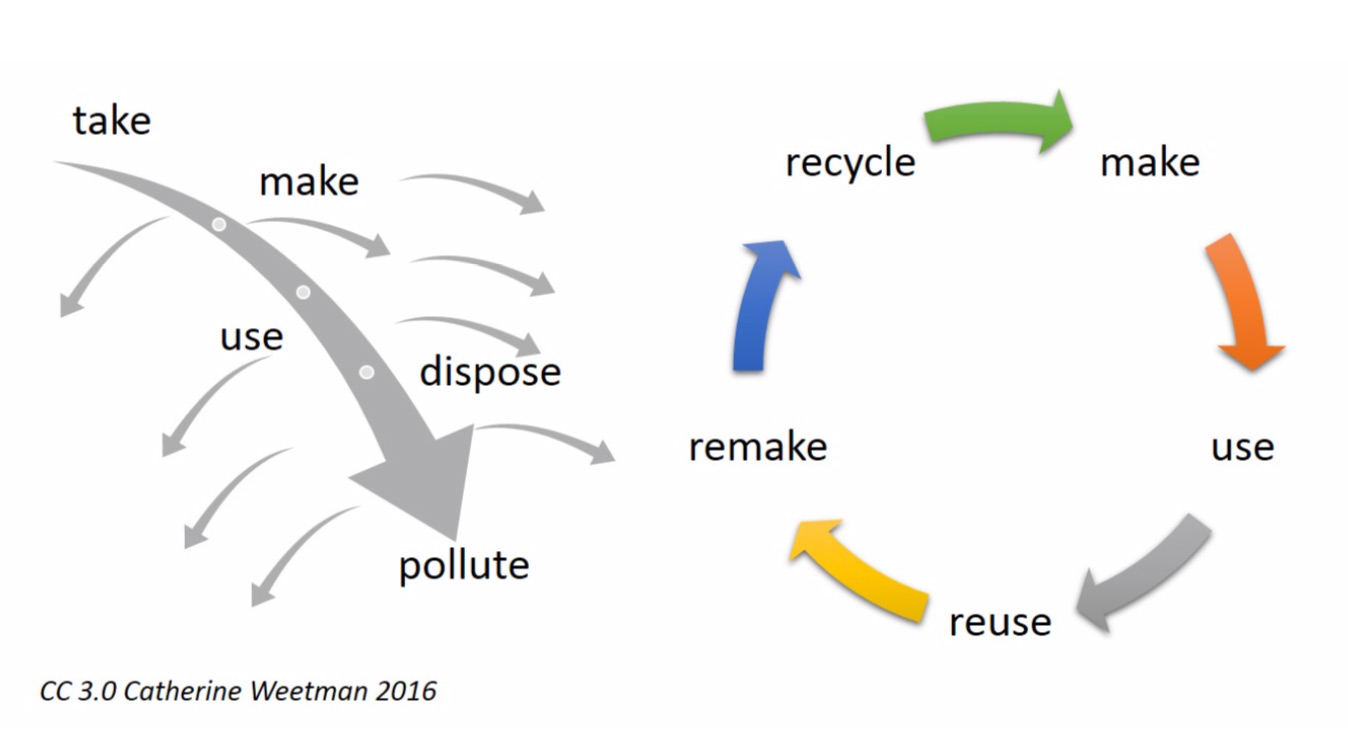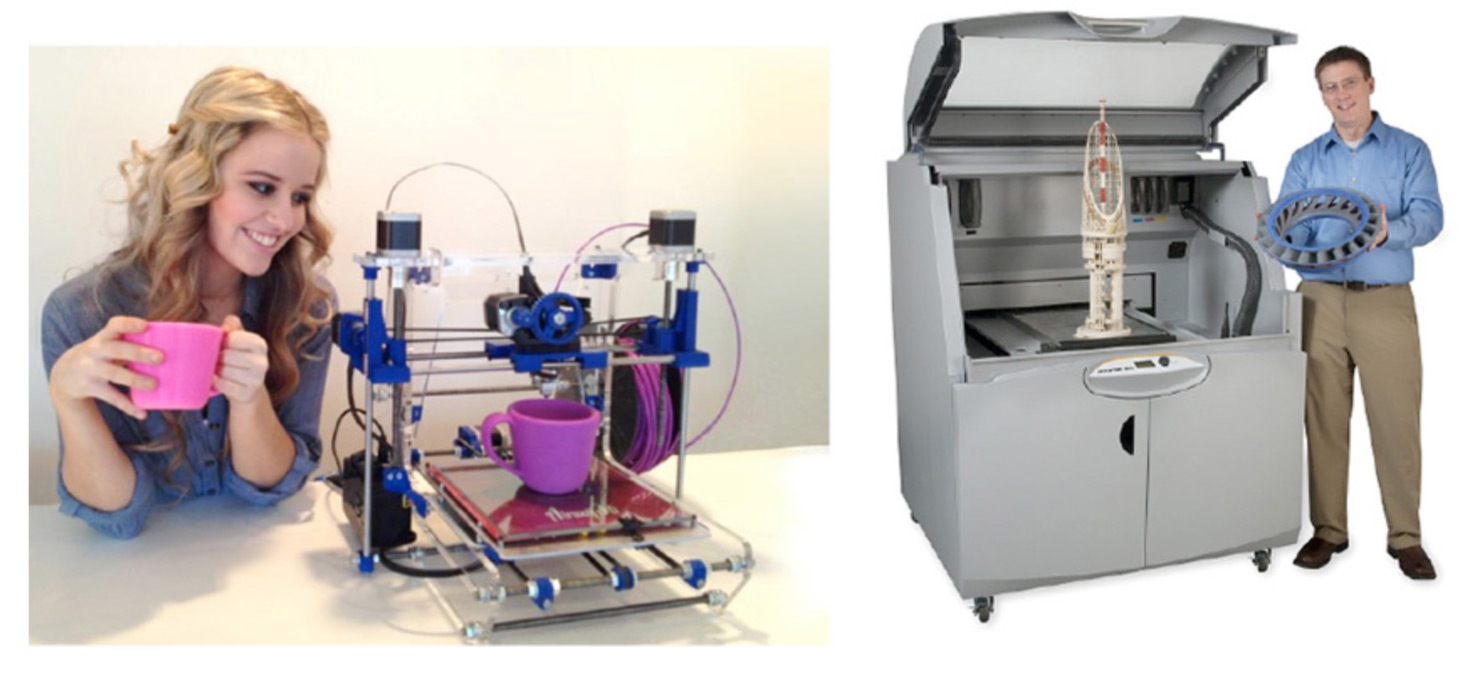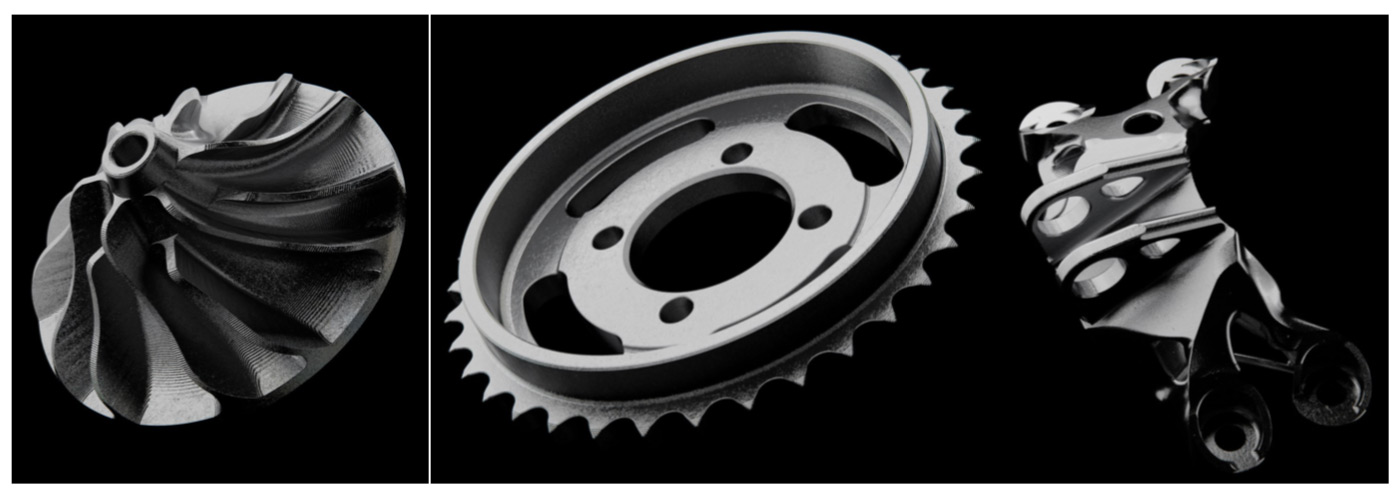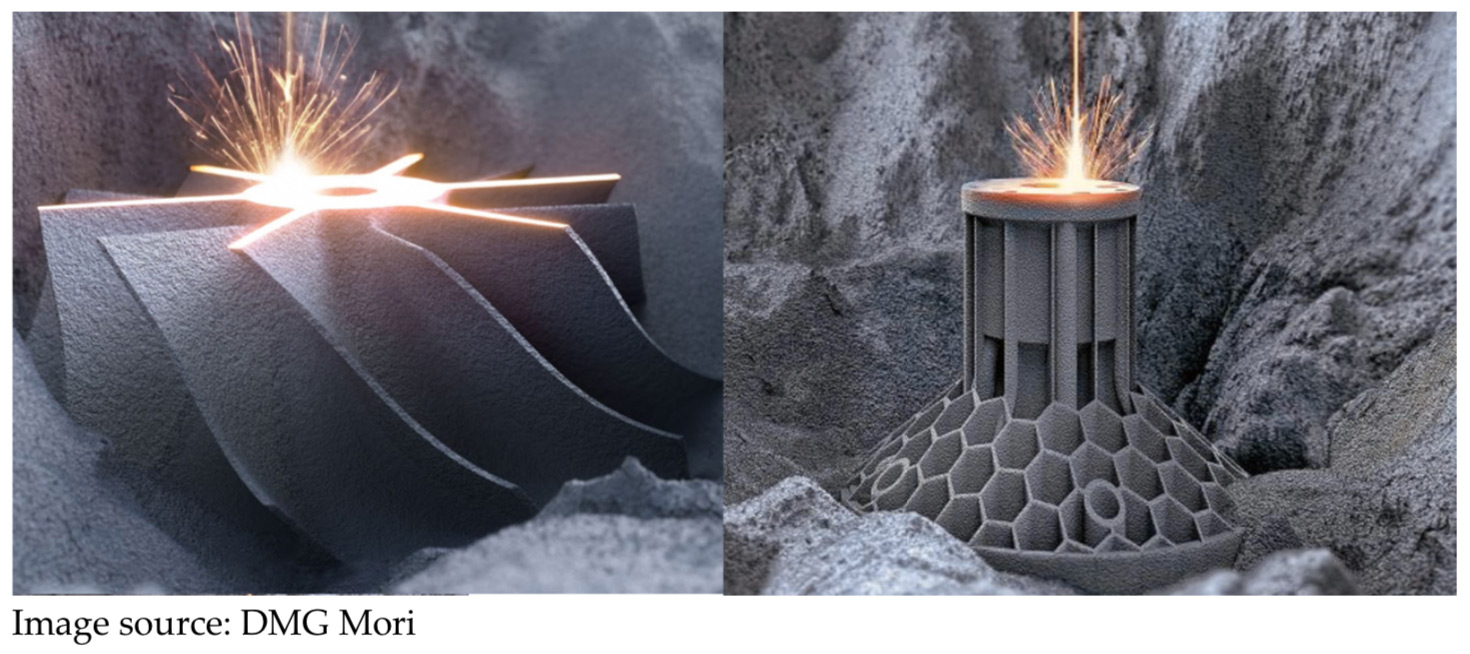The Circular Economy
We build thousands of products on an industrial scale today, but once those products become obsolete, the materials used in them have often not been recycled or repurposed outside of scrap yards. Engineering and financial limitations, difficulties with transporting materials to recycling locations, extant systems with which to recycle them, and the energy necessary to power those systems are all limiting factors. With Scarcity Zero, it becomes easier to take a sophisticated machine, strip out non-recyclable materials and send them off for plasma gasification, and extract recyclable substances that remain – retaining them for use elsewhere in manufacturing and fabrication.
The underlying concept behind this approach is commonly referred to as a “Circular Economy” – an economic system aimed at reducing waste and maximizing efficiency through the continual re-use of resources and materials.[47] In most instances, implementations of circular economies seek to minimize the use of new resources and the creation of waste, pollution and greenhouse gas emissions, and instead employ concepts of refurbishment, remanufacturing and intelligent recycling at scale to keep already-present resources and materials in play.[48] The underlying idea is that “waste” is contextual, and opposed to a traditional “linear economy” that functions on a production model of “extract, manufacture, sell and dispose” a circular economy leverages as many technological methods as feasible to enable regenerative resources and materials for the “circular” reproduction – and upgrade – of systems in a model that’s as closed-loop as possible.[49]

Implementations of circular economies are not necessarily novel concepts, and the systems that can perform such processes already exist today. But Scarcity Zero significantly increases the scale at which this can be accomplished while lowering energy and resource costs. As a result, we would be able to supplement next-generation manufacturing with recycled metals and materials more effectively than we can today, both reducing the need to acquire new materials and enabling the expansion of circular economic models on larger scales – nationwide, or even global. Not only does this improve how we can build things from the design stage, it fundamentally transforms our capabilities to manufacture, recycle and upgrade advanced systems. Examples include:
Intelligent deconstruction. Many products today are simply too complex to be recycled cost-effectively. Consequently, once discarded, they are often thrown in landfills. Reduced energy and material expenses, modern computer systems, and novel engineering methods have lowered the costs of recycling consumer electronics, vehicles, ships, buildings, and airplanes. And as we improve how those things are recycled – or more specifically, disassembled and recycled – this gives us the opportunity to tweak our manufacturing methods to build products that can be disassembled, recycled, and/or upgraded in a modular capacity.
Reduced costs and material requirements. Beyond removing energy as a significant expense, the ability to repurpose older models into newer ones means we don’t have to build new products from scratch. For example: instead of a vehicle going to a scrap yard once it gets old, we could instead engineer that vehicle to be stripped down to its basic components by a factory and refurbished into a newer model – a concept that could be applied to essentially any product.
This form of recycling benefits both consumers and manufacturers. It gives consumers the ability to exchange obsolete models for credit toward a newer model and reduces the expenses and sweat equity manufacturers pay to acquire materials and create products. These benefits contribute to cost savings for both parties, and also increase the agility of manufacturing by allowing us to do more with what we have currently. Plenty of companies strive to reach this goal, but increasing the number of companies who do so alongside advances in energy generation and material procurement increases the efficacy of this recycling method – promoting its adoption within a greater share of market sectors.
Reduced waste footprint. Waste management, an abundant supply of cheap energy, indefinite supplies of synthetic materials, and deconstruction-focused engineering reduces the waste footprint of manufacturing processes. With Scarcity Zero, we wouldn’t build as many products at the expense of the environment, nor would we build products that are destined for landfills. By upgrading and reconnecting our energy production, material procurement, and manufacturing and recycling infrastructure, the lifecycle of a product is contained from start to finish – reducing nature’s presence in the equation.
From Here, We Have Now Reached Three Important Goals:
- With Scarcity Zero, it becomes much easier to make next-generation synthetics that can outperform even the most advanced materials we have today – synthetics that we can use to build and improve practically anything.
- With Scarcity Zero, we can dispose of waste and recycle products far easier and at greater scale than we can at present.
- With goals #1 and #2 met, we can now design systems and products to eventually be disassembled, repurposed, and/or upgraded – turning products into long-term investments instead of one-use discardables.
Combined with computer-aided manufacturing methods like additive/3D printing, this can transform the way our society manufactures products.[50] Traditionally, such manufacturing approaches have allowed companies to rapidly prototype new designs or hobbyists to make improved or replacement parts for various projects.

However, advances in commercial applications of this technology have revolutionized the capabilities present at our fingertips, enabling us to manufacture complex multidimensional shapes and even the preliminary foundations for replacement organs.[51]

One example with strong industrial potential is present in modern metal 3D printing, such as models from the MarkForged company – a leader in 3D metal printing innovation.
MarkForged’s Metal-X models are capable of building complex shapes to the micron or better tolerances out of high-strength thermoplastics, fiberglass, Kevlar, carbon fiber, titanium and both stainless and high-strength tool steel.[52] According to their already-at-market commercial data sheets, their printing methods can build shapes up to 100 times less expensively than traditional casting or machining.[53]
The following three images respectively show a pump impeller, camshaft sprocket and aircraft bracket printed with their technology.

Another example is “selective laser melting” – a method of applying a high-intensity laser to a bed of fine metallic powder (steel, aluminum, titanium, metallic alloy or graphene composite) to manufacture highly detailed shapes, also at micron-or-better tolerances, that meet the highest material strengths commercially available.[54]
Like 3D metal printing, these shapes can reflect practically any attribute that can be envisioned on any axis, and be either solid, hollow, or solid with embedded pathways for isolated fluids.



Without question, the sophistication and precision of these capabilities raises the bar of our manufacturing prowess to uncharted heights. Yet because their deliverables can now also be manufactured as iterative models of products at the push of a button – and can also further be built using the strongest and most resilient materials presently available – these advances can be integrated into any aspect of a modular, standardized and scalable manufacturing chain.
Combined, this changes the game completely – all the more so since these technologies are in their infancy and stand to advance over time with proportionally higher sophistication and proportionally reduced costs. It’s the last piece of the puzzle that we require to build whatever we could need or want. When backed by a technical framework that provides effectively unlimited energy and critical resources by design, this enables us to extend that capability to any social sector we could imagine. And that, in sum, allows us to land the final blow to defeat resource scarcity outright.
Pages
- « first
- ‹ previous
- 1
- 2
- 3
- 4
